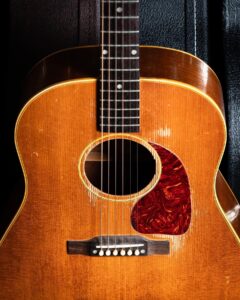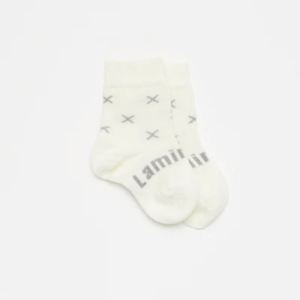For good reason, you’ll find Gibson acoustic guitars played by countless world-renowned artists. This iconic brand makes some of the most aesthetically pleasing and versatile instruments.
You can find various tonewoods used in constructing these guitars – this will affect how they sound and feel. For example, spruce tops provide broad frequency response, while mahogany can help with bass and treble frequencies. For more Gibson acoustic guitar reviews, check this out.
J-45
 The J-45 is the cornerstone of Gibson’s round-shoulder dreadnought line. First introduced in 1942, it is a workhorse instrument that is comfortable and versatile. Its tone is balanced and complete, delivering a warm bass and crisp highs. It has been played by generations of artists, from Lightnin’ Hopkins and Woody Guthrie to Kacey Musgraves.
The J-45 is the cornerstone of Gibson’s round-shoulder dreadnought line. First introduced in 1942, it is a workhorse instrument that is comfortable and versatile. Its tone is balanced and complete, delivering a warm bass and crisp highs. It has been played by generations of artists, from Lightnin’ Hopkins and Woody Guthrie to Kacey Musgraves.
The tumultuous ’60s brought about some changes to the J-45. The finish brightened from dusky black or brown sunburst into a cherry hue that would have looked marvellous on clothing in a swinging London boutique. An adjustable bridge became standard, and the baseball bat neck was slimmed down to accommodate young players and anyone with dainty digits.
The J-45 is an excellent guitar for beginners and experienced musicians alike. Its superb tonal character is a perfect match for strumming chords or fingerpicking, and its versatility makes it an excellent choice for all styles of music. Playing is also highly comfortable, making it ideal for extended sessions.
D-28
A battleship with classic American appointments and a fingerboard reaching the 19th fret, the D-28 is the guitar that professional players choose. This model’s nitrocellulose lacquer finish looks, feels and sounds great. It also resists damage and wear much more effectively than conventional varnishes. Several notable musicians have played Martin D-28s throughout the decades, including Bob Dylan’s 1940s Martin 00-17 and the 1930s Nick Lucas Special he used at George Harrison’s 1971 Concert for Bangladesh benefit.
This D-28’s solid spruce top, East Indian rosewood back and sides, and forward-shifted non-scalloped bracing produce a vibrant tone. It has a full, balanced midrange and immediacy of expression, making it an excellent choice for various styles. A modified low-oval neck with a taper from the nut to the 12th fret offers shred-ready playability. This guitar comes equipped with open-back Waverly tuning machines, a significant upgrade over the traditional chunky Grover tuners on older models.
L-00
Whether you’re playing blues or folk, the L-00 delivers a focused tone that can stand independently. Despite its surprisingly rich sound, its parlor-sized body is compact and comfortable to play with. This model features traditional hand-scalloped X bracing, carefully carved by master luthiers. It allows the soundboard to vibrate more freely, resulting in a fuller and more responsive tone.
This Gibson acoustic guitar also features ivory single-ply binding and Golden Age nickel tuners, which add to its vintage appeal. Its rosewood rectangular bridge is adorned with mother-of-pearl dot inlays and a bone nut. For more Gibson acoustic guitar reviews, check this out.
The L-00 Standard wears a gorgeous thermally aged nitrocellulose lacquer finish, hand-sprayed by Gibson’s talented aging team. Nitro finishes are significantly thinner than today’s polyurethane finishes, allowing the guitar to “breathe” and enhance its tonal qualities. This acoustic guitar has a tremendous unplugged sound and can be played plugged in. Its solid Sitka spruce top and mahogany back and sides give it unparalleled projection not found in comparable small-body acoustic guitars.
G-00
Anyone familiar with Gibson’s Generation Collection of parlor-sized acoustics will recognize this model’s spartan aesthetic, with its unbound Sitka spruce tops and striped ebony fingerboards. But look closer, and you’ll see that the backs and sides of the guitar are lustrous figured walnut.
Like other Generation Series acoustic guitars, the G-00 has a slim neck with medium frets. It makes it easier to press the strings cleanly, but it may require more frequent string retuning than a thicker neck would.
 Among
Among  In addition to a snug fit, the best wool socks keep your feet cool, dry and comfortable during hot weather or intense workouts. Because Merino is moisture-wicking and antibacterial, it won’t trap sweat or cause foot odours so you can go longer between washings.
In addition to a snug fit, the best wool socks keep your feet cool, dry and comfortable during hot weather or intense workouts. Because Merino is moisture-wicking and antibacterial, it won’t trap sweat or cause foot odours so you can go longer between washings.